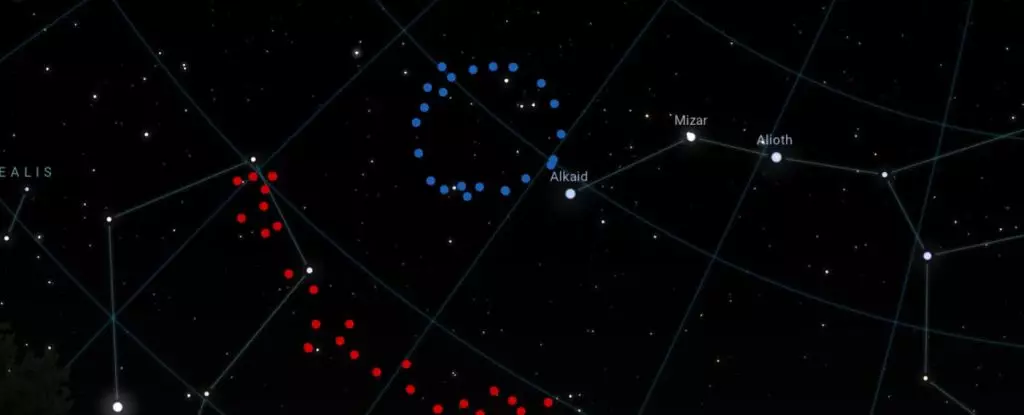Recent astronomical discoveries continue to raise profound questions regarding our comprehension of the Universe’s architecture and its evolutionary narrative. Among these revelations is a colossal ring-like structure located 6.9 billion light-years away. Named the Big Ring, this gigantic formation spans an astounding diameter of 1.3 billion light-years, prompting a reevaluation of existing cosmological models. As astronomers endeavor to interpret this cosmic puzzle, the implications of this discovery resonate deeply within the framework of modern cosmology, challenging long-held beliefs about the distribution of matter in the universe.
Led by astronomer Alexia Lopez from the University of Central Lancashire, the discovery of the Big Ring was first presented at the 243rd meeting of the American Astronomical Society in January. Its findings were subsequently published in the Journal of Cosmology and Astroparticle Physics. Notably, this groundbreaking observation marks the second significant discovery associated with Lopez; the first being the Giant Arc, a colossal arc-like structure residing in the same segment of the cosmos. Each of these structures has presented unique challenges to our understanding, as Lopez herself stated: “Neither of these two ultra-large structures is easy to explain in our current understanding of the universe.”
To make sense of the Big Ring, it is essential to discuss the concept of structures found throughout the universe, particularly Baryon Acoustic Oscillations (BAOs). These formations are echoes of sound waves from the early universe, manifesting as large, spherical arrangements of galaxies. However, the Big Ring diverges significantly from BAOs, as it resembles a corkscrew rather than a perfect sphere, and its size exceeds the theoretical maximum established by current cosmological models. Whereas traditional BAOs are consistently found to be around 1 billion light-years, the Big Ring represents an outright anomaly.
This revelation raises pressing questions about the validity of the Cosmological Principle—the idea that the universe is homogeneous and isotropic on a large scale. Lopez points out that recent calculations estimate a theoretical limit on cosmic structures at approximately 1.2 billion light-years, yet the sizes of the Big Ring and Giant Arc surpass this threshold. The implications of such discrepancies cannot be overstated, leading to a potential reworking of our understanding of cosmic evolution.
Moreover, the discovery poses a dilemma about the likelihood of such massive structures existing concurrently within the observable Universe. Current cosmological theories seem to suggest that only one oversized structure of this nature should be anticipated, challenging researchers to reconcile this with the existence of both the Ring and the Arc in such proximity.
In light of these discoveries, alternative theoretical frameworks come into play. Roger Penrose’s conformal cyclic cosmology postulates that the Universe undergoes repeated cycles of expansion, potentially allowing for the emergence of structures like the Big Ring. However, this theory is not without its own set of challenges and criticisms, and the existence of such grand formations aids in averting a straightforward acceptance of any single theory.
Another noteworthy concept arises from the notion of topological defects in space-time, the so-called cosmic strings. These theorized ‘wrinkles’ in the fabric of the cosmos could have formed during the early moments of the Universe’s existence. While evidence supporting cosmic strings remains largely theoretical, the consistency of such ideas affirms the necessity for scientists to explore a multitude of explanations.
The Big Ring and its counterpart, the Giant Arc, represent not just astronomical oddities, but are emblematic of the shifting paradigms in our understanding of the Universe. It prompts a collective discomfort within the scientific community as researchers grapple with the implication of possibly rewriting significant aspects of cosmological theory.
As astronomers continue to examine these unusual structures, the hope remains that further discoveries could shed light on this series of cosmic riddles. The revelations of enormous formations lurking in the cosmos may very well open up new avenues of inquiry, requiring a reevaluation of what we thought we understood about the universe. Moving forward, the astronomical community must remain open to the possibility that the Universe may not behave as we anticipated, urging a collaborative and innovative approach to unlock the deeper mysteries of cosmic evolution.


Leave a Reply